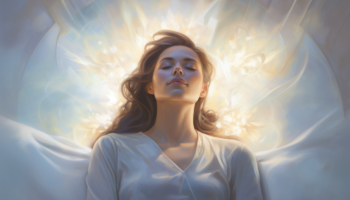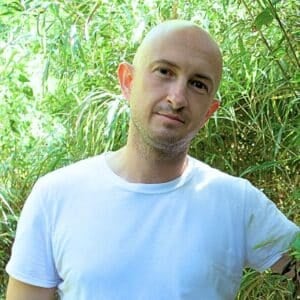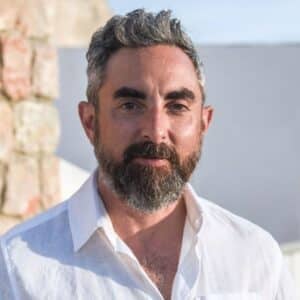At this point, the narrative usually turns to Timothy Leary and Richard Alpert, two buttoned-up, albeit enterprising Harvard psychology professors—and the knives come out. Why?
Throughout the 1960s, no single personality came to be associated more with LSD and the psychedelic movement than Tim Leary, a wickedly funny impresario with one foot in science and the other in popular culture — a reputation that would follow him the world over for the remaining three decades of his life.
But if you look carefully at the icons, rites, and watchwords of today’s psychedelic movement, the characters of Leary and Alpert, and the attendant heady years of the mid-to-late 60s, are surprisingly underrepresented. At a psychedelic conference book table, you’ll find accounts of 50s research, retrospectives by Albert Hofmann, and contemporary ethnographies galore. But as for Timothy Leary’s masterful High Priest or The Politics of Ecstasy, or Richard Alpert’s (by then, Ram Dass) Be Here Now, you’ll have to check Amazon.
WHAT WENT WRONG?
The unspoken variable in the equation? Trauma. And just as mainstream society is still reeling from the long, strange trip that was the 60s (and at the center of all its major innovations and dislodgments: psychedelics), so is psychedelic society still reeling from the trauma of having the door slammed in its face after a promising, wholesome start.
At the core of this trauma: the belief that Leary and Alpert’s reckless approach to psychedelic research, and Leary’s declaration of war on consensus reality, is what provoked the past half century’s allergic reaction to mind-expanding medicines. More than anything else, nobody who cares about normalizing psychedelics wants to risk the slightest chance of messing it up again, now that the opportunity is back.
Fair enough. But let’s cut the mythology. The trauma has already been incurred, so we might as well just ask: what exactly did go wrong in the 1960s? The unsatisfying answer: it’s too hard to pin down to a single variable. But whether or not things could have been done differently, the story comes down to changes in framing and social construction. For many policymakers and Middle American readers of Life, LSD as a tool for psychotherapy and clinical experimentation was one thing, while LSD as a mass youth sacrament — a culture war catalyst in an already uncertain time — was quite another.
FROM SCIENTISTS TO SHAMANS
To be sure, Timothy Leary and Richard Alpert played a part in shifting the terms of the conversation in this direction, despite their roots as humble, scientifically rigorous clinical researchers. Between 1960 and 1962, out of their offices in the Harvard psychology department, the pair ran the Harvard Psilocybin Project, aimed at gauging the short- and long-term effects of psilocybin on prisoners and graduate students. But from the very beginning, Leary, an already somewhat unconventional interpersonal psychologist, had his doubts about a research protocol that required investigators to maintain an experiential and emotional distance from their tripping subjects.
A few years in, the façade of scientific research was too much for Leary and Alpert to bear. By1962, the team had begun inviting undergrads into the psychedelic mix—a surefire recipe for cultural disruption and fast-spreading gossip. Harvard terminated the unapologetic professors in 1963, raising the specter of psychedelics as an agent of chaos, on one hand, and cutting Leary and Alpert free of all pretences to propriety on the other.
And thus began the era of “Turn on, tune in, drop out.” The Harvard circle became the nucleus of a new, radical psychedelia, posted up at Millbrook in upstate New York. Leary, along with Ralph Metzner, published The Psychedelic Experience, a DIY manual that spoke of the stages of a psychedelic trip in terms of the Bardo phases of the Tibetan Book of the Dead.
And following Leary’s translation of the Daodejing, John Lennon commanded millions of listeners on Revolver (1966) to, “turn off your mind, relax, and float downstream.” That same year, one-time boosters at Time warned of an LSD crisis among the youth, and jurisdictions from California to the United Kingdom began criminalizing recreational use of LSD entirely.
PANIC AND PSYCHEDELIA
But if anything, psychedelia only boomed in response—and so, in turn, did collective mainstream panic. As young people from around the country flocked to Haight-Ashbury and other meccas for Be-Ins, acid tests, and season-long experiments in social organization and consciousness, things inevitably went wrong sometimes. So began a half-century’s worth of outsize legends of sanity-breaking freakouts, persistent flashbacks, and Nebraska farm girls who thought they could fly.
By the end of the decade, the last holdouts of clinical research had been snuffed out — even as psychedelic researchers continued to expand into new, exciting frontiers on topics such as creativity and productivity. And while psychedelia didn’t die — and its impact on mass culture could never be undone — throughout the decades, it continued to be identified with the wonkiest aspects of the 60s, a decade that many were eager to forget, or even undo, well into the years of Clinton and Bush. Millions of Americans came of age listening to psychedelic music that made the canon while associating LSD with freaks and their freak-outs.
Could it have gone any differently? Had you been on the vanguard of America’s first psychedelic revolution, could you have done a better job of keeping it together than Leary? It’s impossible to know. As they say, “hindsight is 20/20.” However, the Leary detractors’ point stands: psychedelic research is where it is today because we’ve managed to break the automatic association with the 60s — however important that decade is to our roots.
So even if the society-wide moral panic over LSD in the 1960s is something to lament, we can consider the movement’s shell shock something of a mixed blessing. Decades of stigma and criminalization have forced us to tamp down the needlessly inflammatory messaging, giving us a chance to reinvent the psychedelic conversation for a new age.






